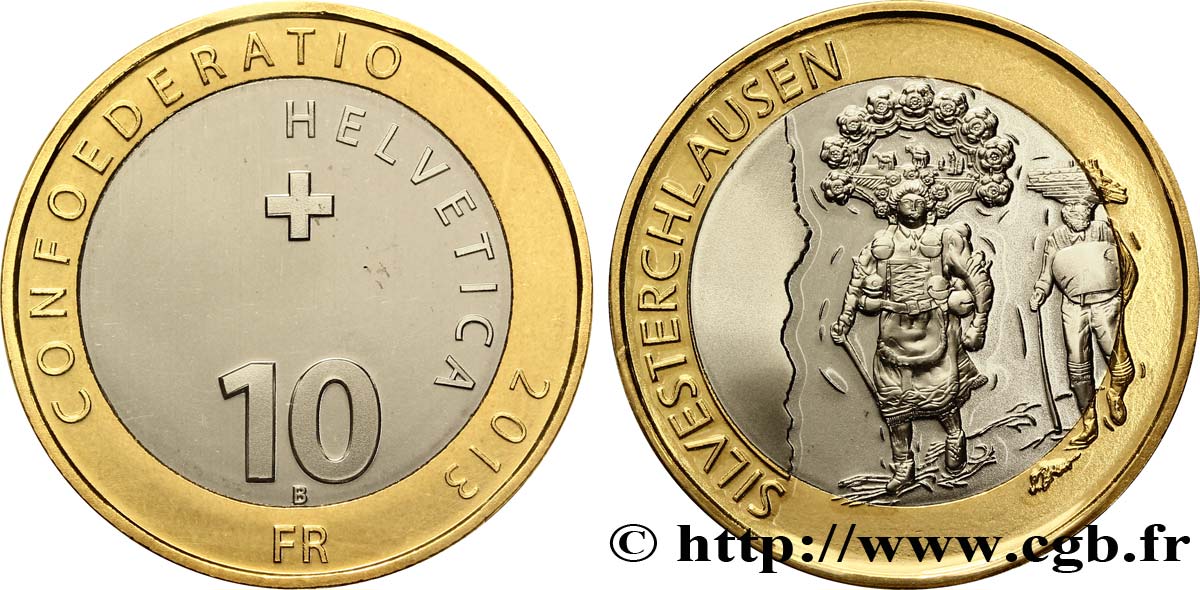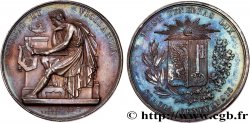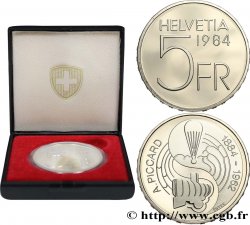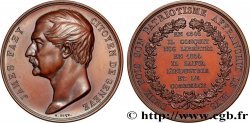E-auction 151-90072 - fwo_385732 - SWITZERLAND 10 Francs Silvesterchlausen 2013 Berne
You must signin and be an approved bidder to bid, LOGIN TO BID. Accounts are subject to approval and the approval process takes place within 48 hours. Do not wait until the day a sale closes to register. Clicking on « bid » constitutes acceptance of the terms of use of cgb.fr private e-auctions.
Bids must be placed in whole Euro amounts only. The sale will start closing at the time stated on the item description; any bids received at the site after the closing time will not be executed. Transmission times may vary and bids could be rejected if you wait until the last second. For further information ckeck the E-auctions F.A.Q.
NO BUYER'S FEE.
NO BUYER'S FEE.
| Estimate : | 22 € |
| Price : | 12 € |
| Maximum bid : | 14 € |
| End of the sale : | 07 March 2016 18:27:00 |
| bidders : | 4 bidders |
Type : 10 Francs Silvesterchlausen
Date: 2013
Mint name / Town : Berne
Quantity minted : -
Metal : bi-metallic
Diameter : 33 mm
Edge : séries de cannelures
Coments on the condition:
sous étui d’origine Swissmint
Catalogue references :
Obverse
Obverse legend : CONFEDERATIO HELVETICA / 2013 / FR.
Obverse description : croix et chiffre “10”.
Obverse translation : CONFÉDÉRATION HELVÉTIQUE.
Reverse
Reverse legend : SILVESTERCHLAUSEN.
Reverse description : deux Chläuse masqués et costumes.
Commentary
Le Silvesterchlausen est la coutume hivernale la plus impressionnante que compte l'arrière-pays d'Appenzell Rhodes-Extérieures. Remontant à la nuit des temps, cette coutume est pratiquée à Herisau et dans quelques autres communes le 31 décembre. Toutefois, à Urnäsch et Waldstatt, elle est pratiquée le 13 janvier, dernier jour de l'an selon le calendrier julien. Seulement autorisé les derniers jours de l'année, le Silvesterchlausen a pour origine les chants du nouvel an et l'usage autrefois largement répandu chez les mendiants de se déguiser à la Saint Sylvestre. Aux XIXe et XXe siècles, la coutume s'est peu à peu établie. Les Chläuse se répartissent en différents groupes pour mettre en valeur les cloches et le chapeau en forme de roue de chaque participant. A mesure que la variété des costumes s'élargissait, les Chläuse ont également vu leur tenue devenir de plus en plus imposante.
A cinq ou six heures du matin, les Chläuse se préparent. Leur itinéraire débute en dehors du village, chez un agriculteur qui les a invités à déjeuner. Puis, ils vont de ferme en ferme. Devant chaque maison, ils se disposent en cercle, font retentir leurs cloches et entonnent un jodel naturel appelé Zäuerli. Finalement, ils souhaitent la bonne année à l'agriculteur et à sa famille en leur serrant la main de manière énergique et repartent vers la prochaine ferme dans l'ordre auquel ils sont arrivés.
The Silvesterchlausen is the most impressive winter custom in the hinterland of Appenzell Ausserrhoden.. Dating back to the dawn of time, this custom is practiced in Herisau and in several other municipalities on December 31st.. However, in Urnäsch and Waldstatt it is practiced on January 13, the last day of the year according to the Julian calendar.. Only allowed in the last days of the year, the Silvesterchlausen originates from New Year's carols and the once widespread custom among beggars of dressing up on New Year's Eve.. In the 19th and 20th centuries, the custom gradually became established. The Chläuse are divided into different groups to highlight the bells and wheel-shaped hat of each participant.. As the variety of costumes expanded, the Chläuse also saw their attire become increasingly imposing..
At five or six in the morning, the Chläuse get ready. Their journey begins outside the village, at the home of a farmer who has invited them for lunch.. Then they go from farm to farm. In front of each house, they form a circle, ring their bells and sing a natural yodel called Zäuerli.. Finally, they wish the farmer and his family a happy new year with a vigorous handshake and set off for the next farm in the order in which they arrived.
A cinq ou six heures du matin, les Chläuse se préparent. Leur itinéraire débute en dehors du village, chez un agriculteur qui les a invités à déjeuner. Puis, ils vont de ferme en ferme. Devant chaque maison, ils se disposent en cercle, font retentir leurs cloches et entonnent un jodel naturel appelé Zäuerli. Finalement, ils souhaitent la bonne année à l'agriculteur et à sa famille en leur serrant la main de manière énergique et repartent vers la prochaine ferme dans l'ordre auquel ils sont arrivés.
The Silvesterchlausen is the most impressive winter custom in the hinterland of Appenzell Ausserrhoden.. Dating back to the dawn of time, this custom is practiced in Herisau and in several other municipalities on December 31st.. However, in Urnäsch and Waldstatt it is practiced on January 13, the last day of the year according to the Julian calendar.. Only allowed in the last days of the year, the Silvesterchlausen originates from New Year's carols and the once widespread custom among beggars of dressing up on New Year's Eve.. In the 19th and 20th centuries, the custom gradually became established. The Chläuse are divided into different groups to highlight the bells and wheel-shaped hat of each participant.. As the variety of costumes expanded, the Chläuse also saw their attire become increasingly imposing..
At five or six in the morning, the Chläuse get ready. Their journey begins outside the village, at the home of a farmer who has invited them for lunch.. Then they go from farm to farm. In front of each house, they form a circle, ring their bells and sing a natural yodel called Zäuerli.. Finally, they wish the farmer and his family a happy new year with a vigorous handshake and set off for the next farm in the order in which they arrived.








 Report a mistake
Report a mistake Print the page
Print the page Share my selection
Share my selection Ask a question
Ask a question Consign / sell
Consign / sell
 Full data
Full data










